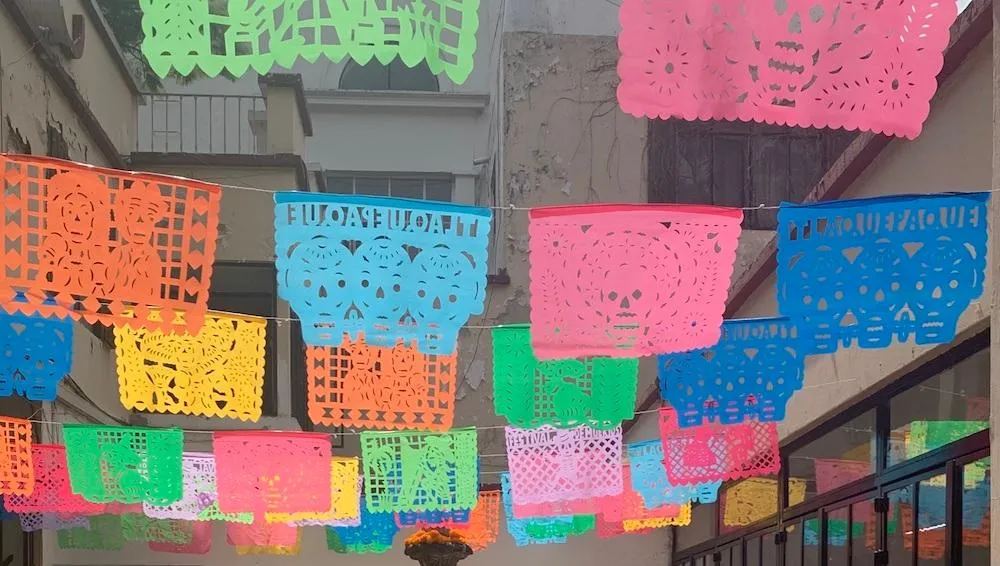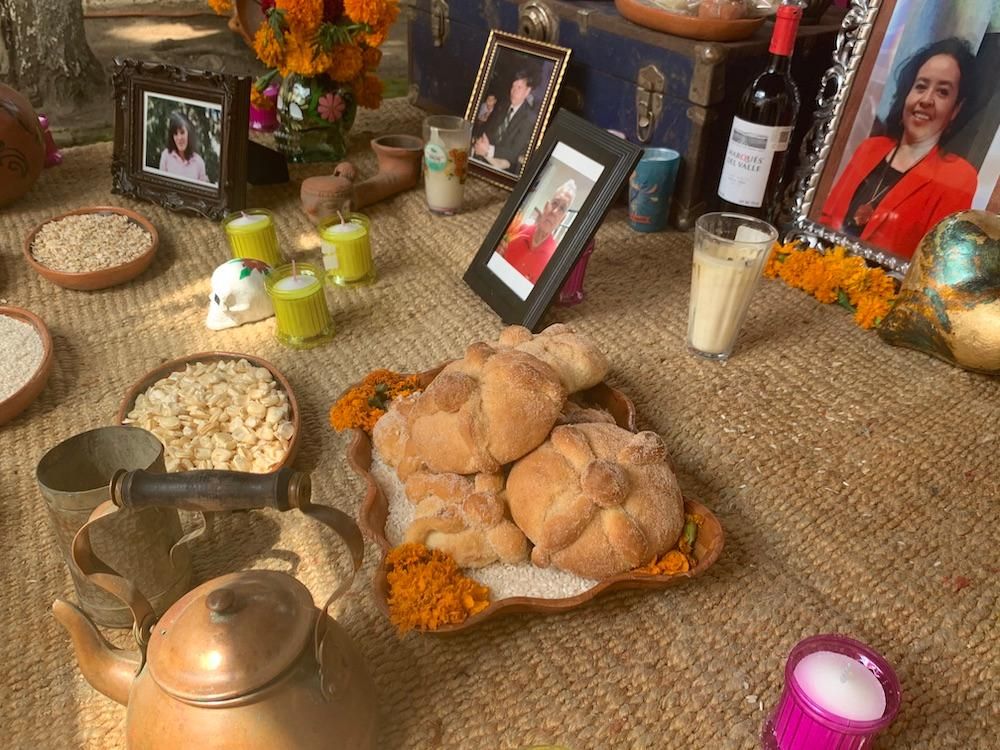The Meaning Behind Six Objects on Día de los Muertos Altars
From marigolds to sugar skulls, the traditional Mexican holiday is full of symbols
/https://tf-cmsv2-smithsonianmag-media.s3.amazonaws.com/filer/bd/63/bd63b59e-36cf-4bfc-be09-15e8d6c51305/altar1.jpg)
Light envelops the foyer inside Alfonso López Fértor’s home in Guadalajara, Mexico, filling the space with a warm, welcoming glow. Inside he has set up an elaborate altar (ofrenda) in preparation for Día de los Muertos, or Day of the Dead, a multi-day holiday celebrated throughout Mexico and parts of Latin America that honors loved ones who have died. While many people might view death as a time filled with sadness and grief, for 30-year-old López Fértor, it’s a moment for celebration. Every year for the past four years, he has created an altar inside his home to celebrate and remember the lives of friends and relatives who have passed. As he shows me the altar, which he and his roommate have decorated with bright orange marigolds, painted skulls, flickering candles, bottles of tequila and colorful paper cutouts, he points out photographs of his grandfather, grandmother and family friends who are no longer with us.
“It’s really important to my family and I that we make an altar to remember relatives who have died,” López Fértor says. “I remember as a child every year my mom would make an altar, so when I started living alone a few years ago, I wanted to do the same thing.”
The creation of altars has been an important part of Día de los Muertos, a festival whose origins are deeply rooted in Aztec beliefs and tied to the goddess Mictecacihuatl, also known as the “Lady of the Dead.” Over the centuries, the holiday became more intertwined with Catholic traditions and shortened from a month-long event to a celebration that’s held in Mexico on November 1 (All Saints’ Day, which celebrates children who have died) and November 2 (All Souls’ Day, which celebrates adults).
Like many holidays, modern observances of Día de los Muertos have evolved over time. Not too long ago, creating altars was something predominately done by older members of a community, however López Fértor says that he’s noticing members of the younger generation, including himself, are taking part to help keep the tradition alive.
“It’s an important part of my culture, and I wanted a way to remember family members and friends who are no longer with us,” he says. “I recommend for anyone who has ever lost someone to create an altar. This isn’t a time for sadness, it’s a time for celebration.”
Here are six of the most common objects found on altars and the symbolic meanings behind each one.
Skulls (calavera)

Probably one of the most recognizable symbols of Día de los Muertos, these skulls are often made of granulated sugar, meringue powder and water. The mixture is molded into the shape of a skull, and then decorated with brightly colored ornamentation. “The skulls represent the people who have passed and who are receiving offerings at the altar,” says Silvia Natalia Islas, promotional director of La Casa del Artesano, a consortium of artisans located in historic Tlaquepaque, a municipality of Guadalajara, whose members created a massive outdoor altar in remembrance of other artisans who have died. “The sugar symbolizes the sweetness of life.”
Marigolds

Often referred to as “flowers of the dead” (flor de muerto), it’s believed that the scent of these bright orange blooms help attract souls to the altar. At La Casa del Artesano, clusters of freshly picked marigolds are intermingled with burning incense made of the resin of the copal tree and a bell, whose scent and sound are intended to draw in souls.
Perforated Paper (papel picado)

While many people opt to go the easy route and purchase pre-made versions of this intricately cut tissue paper, López Fértor’s roommate cut theirs by hand. “The holes allow a way for souls to travel through and visit,” López Fértor says. It’s also believed that the delicate nature of the paper is symbolic of the fragility of life.
Pan de Muerto (bread of the dead)

This soft and sweet bread is designed with a circle and limbs to mimic the shape of a skull and crossbones and is finished with a dusting of sugar. It’s just one of a number of food stuffs placed at altars for hungry souls to partake in. “We usually include items that the person liked when they were alive,” Islas says. “We also place a bottle of water and tequila on the altar, because when the souls arrive, they’re often thirsty.”
Salt

Also said to help quench the thirst of souls, salt is set out in the pattern of a cross so that “the soul won’t be corrupted,” López Fértor says. The salt, he adds, "helps purify them."
Photographs

Photos placed on an altar are always of someone who is deceased. “Otherwise, they won’t be drawn to the altar and can’t cross over,” he says. López Fértor included photos of his grandparents and family friends at his altar, while the artisans at La Casa de Artesano placed pictures of fellow artists who had died earlier this year.
Planning Your Next Trip?
Explore great travel deals
Smithsonian magazine participates in affiliate link advertising programs. If you purchase an item through these links, we receive a commission.